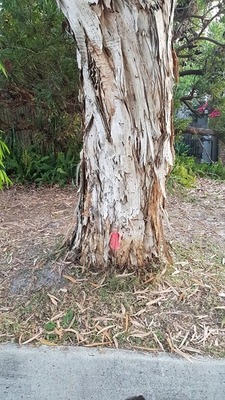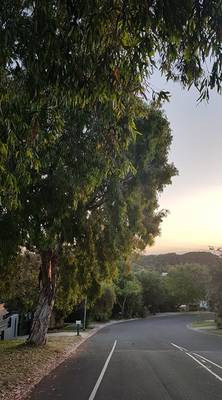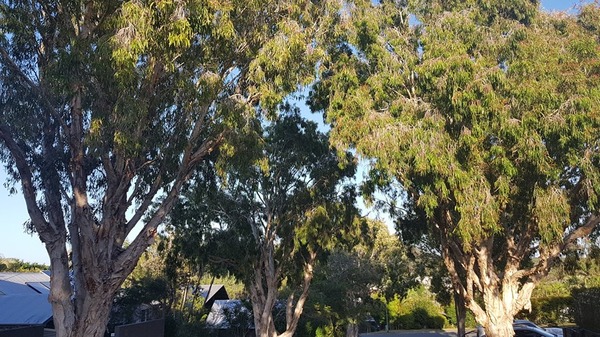By Abbey Cannan
Sunrise Beach resident Steve Miller has concerns over Council’s plans to remove 24 Weeping Paperbark trees that have lined the suburb’s streets for over 30 years, adding to a total of 73 trees planned to be removed from across the Shire.
“Last year the Council removed some trees in Ben Lexcen Drive, Sunrise Beach, and there were a few more that were marked to go. After local concern, the Council actually decided to save some trees by doing work on the roof of the trees and a bit of resetting of the concrete on the curb,” Steve said.
“We were happy with that result, at least we only lost a few trees at that stage, but we realised on Sunday after receiving a letter from another concerned resident that there’s about 15 or so 30-year-old Paperbark trees and the Council seem to think that it’s a good idea, environmentally, just to bring the chainsaws and do away with all that foliage which supports beautiful native trees.”
“So, last year we talked to Council about the fact that if they were going to have this tree removal program then why haven’t they been planting trees to replace them rather than just have barren streets for 10 years. But in the time since these trees were cut down, there hasn’t been any planting so it just seems to be a quick fix and it’s really insane that they would just lose that much foliage and not have any replanting already happening so that the wildlife can adapt.”
“Our short term goal is to work as a community to convince the council that there are better ways to manage these trees – ways that are more in keeping with our region as a precious Biosphere Reserve,” Steve said.
Council’s Infrastructure Services Director, Carl Billingham said that Weeping Paperbark trees aren’t native to Noosa, but were a popular choice of street tree among Queensland developers in the 70s and 80s.
“30+ years later, Noosa, like other councils, is dealing with the consequences of the trees’ aggressive root systems, by way of damage to roads, footpaths, driveways and other valuable infrastructure,” Carl said.
“There are more than 700 of these trees beside roads and footpaths across Noosa Shire.
“At Sunrise Beach, paperbark tree roots have caused at least $30,000 worth of damage. Across the shire, the damage bill is over $100,000.
“We’ve had an independent arborist assess 733 paperbark trees. On the arborist’s professional advice we are looking to remove 73 trees across the shire, and replace them with a more suitable, but quick-growing, local species that has smaller root systems.”
Carl said that the arborist assessed 120 paperbarks at Sunrise Beach and that based on the arborist’s advice, 24 of them are earmarked for removal/replacement.
“We’re only removing the trees that are already damaging roads, footpaths, drainage pits, pipes and private driveways, or where they pose a threat in the near future. Some of the roots, and the pavement damage they’ve caused, are also a trip hazard,” he said.
“Acting quickly following the arborist’s assessment will help prevent the damage bill escalating.”
Carl said that the size of the root systems also makes it difficult to plant the replacement trees prior to the paperbarks’ removal.
“In most cases, we also need to replace or repair the damaged infrastructure before we can replant with the new trees,” he said.
“Where necessary, we’ll plant the replacement trees further away from pipes, paths, roads and other infrastructure.
“The new trees will be at least 1-1.5 metres tall. Trees of this size grow quickly, whereas much larger trees often suffer from transplant shock and can be slower to start growing.
“We will consult with property owners before removing street trees that are close to homes.”








